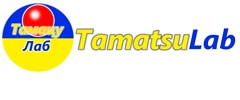Sao Tome and Principe
Location
It consists of two main islands and a surrounding archipelago, Sao Tome and Principe, about 300 km and 250 km from Gabon's northwest coast.
Area
About 1,000km2
Capital (approximate population)
Sao Tome(72,000)
Population
about 210,000 people
Racial Composition
Mestizo, Angolan, Foros, Other
Language
Portuguese
Religion
82% Christian
Culture
You will see a mixture of African and Portuguese cultures.
- Pico Cao Grande
- Cascata de Sao Nicolau
- Lagoa Azul
- Museu Nacional De Sao Tome & Principe
- Praia Jale
Education
There are four years of compulsory education. Domestic funding for the school system is scarce and the system relies heavily on foreign funding.
- University of Sao Tome and Principe
- Biblioteca Nacional STP
Sao Tome and Principe Overview of modern and contemporary history
1800s Cacao plantation farming flourishes
1951 Become an overseas province of Portugal
1960 ao Tome and Principe Liberation Commission (MLSTP) established
1974 Military coup in mainland Portugal (Carnation Revolution). The Portuguese government recognizes the islands' right to independence and recognizes the MLSTP as sole representative in negotiations. Portuguese escape
1975 independence from Portugal. President Manuel Pinto da Costa and Prime Minister Miguel Troboada are appointed from the MLSTP. Plantation nationalization. Building strong ties with communist countries
1978 Attempted coup. Government asks Angolan military for help
1980 Reduced ties with communist countries as the economy deteriorated. Seek help from the West
1988 attempted coup
1990 Legalize opposition parties and introduce a new constitution stipulating multiparty elections
1991 First multi-party elections. The Movement for Sao Tome and Principe Independence (MLSTP) fails to obtain a majority, and an interim government is established. Independent Candidate President Miguel Trovoada Elected
1992 Political instability due to austerity policies
1994 Sao Tome and Principe independence movement regains power
1995 President Trovoada is arrested in a bloodless coup. However, due to pressure from donor countries, Trovoada returned.
1996 Re-election of President Trovoada
1997 Economic anxiety. Established diplomatic relations with Taiwan. China suspends diplomatic ties
2000 civil servants strike
2001 President de Menezes elected
2002 Plans announced for U.S. naval base in the country to protect oil interests
2003 military coup. President De Menezes, who was in Nigeria at the time, made an agreement with the military junta to return to Sao Tome a week later. Oil company bids for offshore oil block in Sao Tome and Principe
2004 A dispute between the president and the prime minister over oil rights. PM and government sacked after corruption scandal
2009 attempted coup
2011 Independence leader Da Costa elected president
2016 President Evaristo Carvalho is elected. Severed diplomatic relations with Taiwan and restored diplomatic relations with China
Politics
It is a semi-presidential democratic republic. The president is the head of state and the prime minister is the head of government. The parliament is unicameral.
- Palacio Presidencial ou do Governo
GDP per capita
$1,668
Economy
It has traditionally relied on cocoa plantation farming, but this has undergone a major change due to the discovery of oil fields.
Africa
South Africa, Egypt, Nigeria, Democratic Republic of the Congo, Ethiopia, Kenya, Tanzania, Uganda, Mozambique, Madagascar, Zambia, Malawi, Zimbabwe, Botswana, Namibia, Angola, Cote d'Ivoire, Morocco, Cameroon, Ghana , Burkina Faso, Congo Republic, Gabon, Central African Republic, Chad, Niger, Mali, Mauritania, Algeria, Tunisia, Libya , Sudan, South Sudan, Guinea, Senegal, Eritrea, Djibouti, Somalia, Rwanda, Burundi, Seychelles, Comoros, Mauritius, Eswatini, Lesotho, Equatorial Guinea, Sao Tome and Principe, Benin, Togo, Liberia, Sierra Leone, Guinea Bissau, Gambia, Cape Verde
-- Return to World Region Information --


